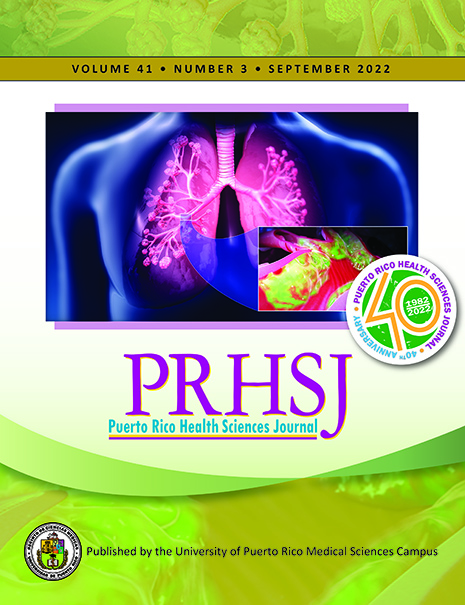Abstract
Objective: To provide a descriptive analysis of the indications and the intraoperative and postoperative complications of eye enucleations and eviscerations, and orbital exenterations performed at the only academic institution in Puerto Rico providing supratertiary care. Methods: A retrospective medical record review of patients who underwent enucleations, eviscerations, and exenterations from January 2015 through June 2020 was conducted. The data were analyzed to generate a descriptive profile of the demographic characteristics of the patients, their clinical indications and surgical complications, and a histopathological diagnosis per type of eye-removal procedure. Results: A total of 118 eyes were removed via enucleation, evisceration, or exenteration over the 66-month study period. The average patient age was 64 (±17.5) years and 63.8% of the patients were male. The most frequently performed eye-removal procedure was enucleation (73.7%), followed by evisceration (18.6%) and exenteration (7.6%). The main clinical indications for enucleations and eviscerations were infectious processes, namely panophthalmitis, endophthalmitis, and/or perforated corneal ulcers, that failed medical management. In our sample, squamous cell carcinoma was the most common diagnosis (both clinically and histopathologically) leading to exenteration. Postoperative complications in our patient cohort were minimal. Conclusion: At our institution, enucleations predominate over eviscerations. Retrospective reviews published in recent years indicate that the rate of eviscerations at our institution is comparatively low. The results of this study, the first of its kind at our institution, may encourage a re-evaluation of the indications for evisceration versus enucleation in our patient population.
Authors who publish with this journal agree to the following terms:
a. Authors retain copyright and grant the journal right of first publication with the work simultaneously licensed under a Creative Commons Attribution License that allows others to share the work with an acknowledgement of the work's authorship and initial publication in this journal.
b. Authors are able to enter into separate, additional contractual arrangements for the non-exclusive distribution of the journal's published version of the work (e.g., post it to an institutional repository or publish it in a book), with an acknowledgement of its initial publication in this journal.
c. Authors are permitted and encouraged to post their work online (e.g., in institutional repositories or on their website) prior to and during the submission process, as it can lead to productive exchanges, as well as earlier and greater citation of published work (See The Effect of Open Access).
